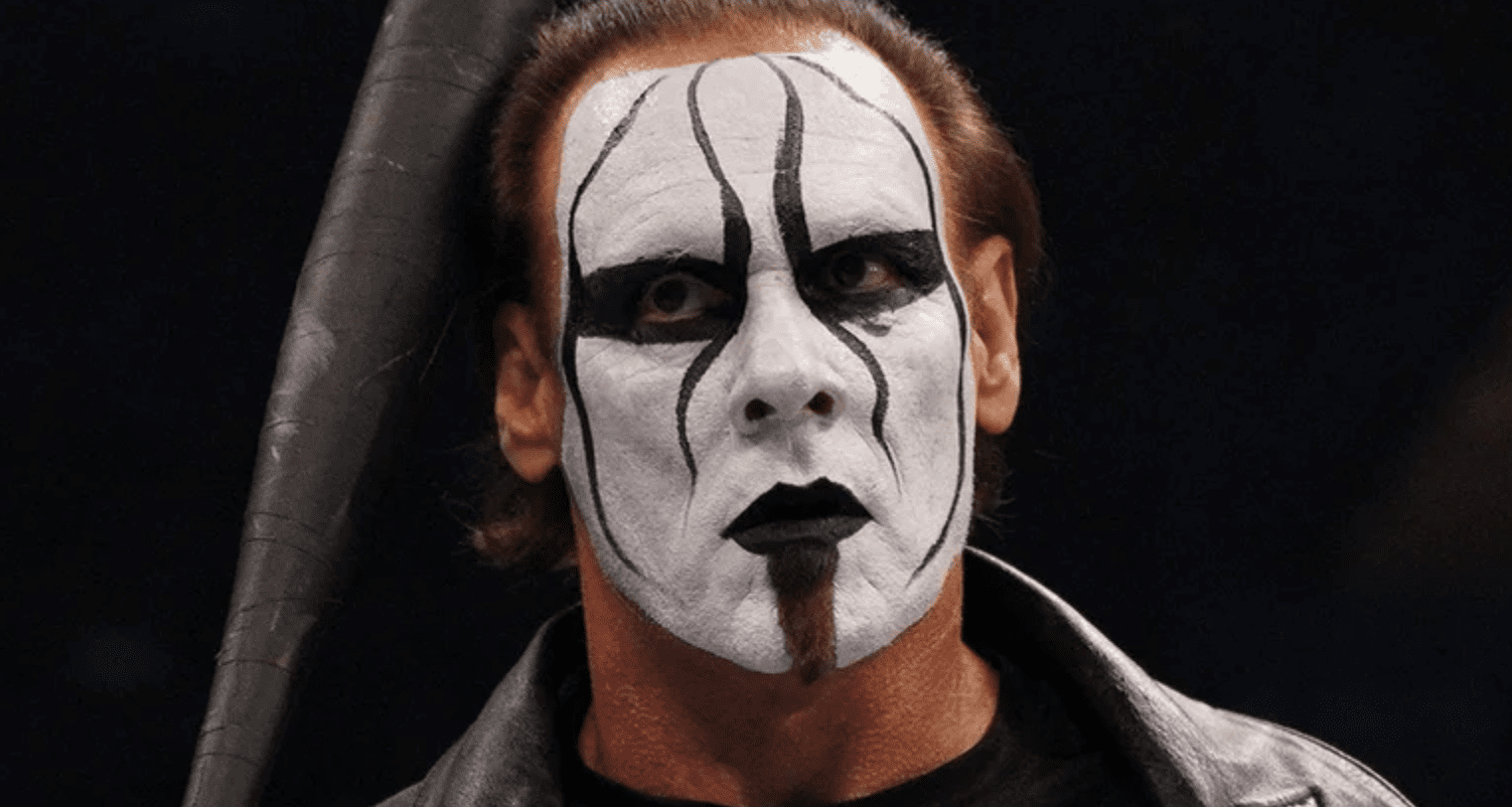Sting’s incredible career is over.
The 64-year-old pro wrestler participated in his retirement match at All Elite Wrestling’s Revolution pay-per-view on Mar. 3. He successfully defended the AEW world tag team titles with his partner, Darby Allin, against The Young Bucks (Matt and Nick Jackson).
When Sting put his finishing hold, the Scorpion Death Lock, on Matt Jackson and made him tap out, it ended a career that had spanned nearly four decades. He’s been called a legend and an icon in the squared circle. He held 26 different titles in his career. He worked in nearly every major wrestling promotion. He faced off against virtually every well-known wrestler you can think of. His famous lines, including “It’s showtime!,” “The only thing that’s for sure about Sting is nothing is for sure” and the loud “Woooo!” chant he shared with his equally legendary rival and friend, Ric “Nature Boy” Flair, will surely stand the test of time.
Much in the same way that longtime wrestling announcer Tony Schiavone’s memorable line announcing his arrival on the scene, “It’s Stiiiiiing!,” will never be forgotten.
In many ways, Sting is one of the last links to the old days of pro wrestling. This is due to the litany of individuals and tag teams he wrestled for 39 years – and who they, in turn, wrestled. It’s difficult to put an exact number on it. When you put everything together, he likely walked in the footsteps of between 75 to 100 years of pro wrestling history.
That’s an amazing story in itself. While I was unable to peg down an interview with Sting before his final showtime (not for a lack of trying, mind you), let’s attempt to walk in his shoes and retrace some of the steps that led to his legendary status in pro wrestling.
Sting, whose real name is Steve Borden, was born in Omaha, Nebraska in 1959 and grew up in Southern California. He was heavily involved in sports, including football and basketball, and went on to become a bodybuilder and co-own a Gold’s Gym. He didn’t follow pro wrestling as a young lad, and grew up in one of the very few areas in the U.S. where it wasn’t even on TV. When Hulk Hogan used to work out in his gym, for instance, most people immediately recognized the legendary wrestler and WWF (now WWE) world champion, but Borden only knew him from his appearance in the movie Rocky III.
He would meet Rick Bassman, a manager who was trying to find a fourth member of a group he was putting together called Power Team USA. Borden agreed to put up a sign at his gym to start with, and was later approached by Bassman with an offer to take that spot. He was hesitant at first, but decided to take a chance after watching and enjoying a live event with stars like Hogan, Andre the Giant and the Iron Sheik.
Borden was originally teamed up with Jim Hellwig, who would later become The Ultimate Warrior in WWF/E. They would send out packages to try to get work, but only Jerry Jarrett’s Continental Wrestling Association expressed any interest. They formed a team called the Freedom Fighters between 1985-1986, but didn’t catch on largely due to their inexperience and lack of proper training. They finished up at CWA and headed off to Jim Watts’s Universal Wrestling Federation and became the Blade Runners. Their gimmick was wearing face paint and attempting to become a new version of the legendary tag team The Road Warriors. Borden also switched his wrestling nickname from Flash to Sting, which he maintained for the rest of his career.
The Blade Runners broke up in 1986 when Hellwig left the UWF. Borden stayed on, teamed up with Eddie Gilbert and won the UWF world tag team championship on two occasions. He would also win the straps a third time with Rick Steiner, who would go on to form several legendary tag teams, including with his brother Scott. Although there were plans for Borden to win the UWF TV title, they changed after Jim Crockett’s National Wrestling Alliance bought out the promotion. For the better, as it turned out.
Sting’s career exploded in the NWA. He would go on to have the match of his life at the first Clash of Champions on March 27, 1988 in Greensboro, North Carolina. He wrestled the NWA world champion, Flair, to a magnificent 45 minute draw on live television. Many of the people who watched this match either in person or at home (including me) were astonished by how well this young wrestler held his own against one of the greatest to ever enter the squared circle.
It was the start of an incredible run. He would hold various titles, including two reigns as NWA world champion and, after the promotion’s assets were purchased by media mogul Ted Turner, an additional six reigns for World Championship Wrestling. He would work with and against a who’s who of wrestling superstars, including Flair, Hogan, Barry Windham, Lex Luger, Big Van Vader, The Road Warriors, Jim Cornette and The Midnight Express, The Rock ’n’ Roll Express, Ricky Steamboat, The Great Muta, Nikita Koloff, Booker T, Randy Savage, Paul “The Giant” Wight and others.
When WCW was purchased by Vince McMahon’s WWF/E in 2001, Sting let his contract run out and didn’t sign with the promotion due to concerns about how he would be used. He moved on to Total Nonstop Action Wrestling from 2003-2014, became its top star and won the promotion’s world championship on several occasions. He wrestled the likes of Samoa Joe, AJ Styles, Kurt Angle, Mick Foley, Christian Cage, Abyss and, once again, Hogan and Flair.
At long last, Sting signed with WWE in 2014 (as the “last holdout/soldier” of WCW) and faced off against Triple H at Wrestlemania 31. He lost that match, much to the surprise of many in the audience and around the world. His short run in the world’s biggest wrestling promotion didn’t go quite as planned. He almost didn’t wrestle again after a freak accident against WWE world heavyweight champion Seth Rollins at the 2015 Night of Champions. He suffered a legitimate neck injury and was forced to retire for several years. WWE put him in its Hall of Fame the following year, and it looked like his story was over.
Thanks to AEW, which is co-owned by Tony Khan and his father, Shahid — a billionaire businessman through his motor parts company, Flex-N-Gate, and owner of the NFL’s Jacksonville Jaguars and Fulham F.C. of the English Premier League – one final chapter was written. Sting joined the fledgling promotion in Dec. 2020, and would win all 29 matches (plus one match in Pro Wrestling Noah) he participated in. He wrestled at an extremely high level, and his neck and body never gave him any problems. He jumped off ladders and balconies, and did remarkably well against foes who were much younger than him.
It was clear at his final media scrum after AEW Revolution 2024 that he had some hesitation about winning a final title as well as his final match. Pro wrestlers of previous generations used to end their careers (up until recently) with a final loss and were taken out on their shields. Tony Khan, an enthusiastic wrestling fan before he co-founded AEW and purchased Ring of Honor, convinced Sting to follow a different path. He did, and it all worked out rather well.
There are other parts to Sting’s life and career that are equally fascinating.
He found religion some years ago after struggling with various forms of addiction, for instance. He’s credited God and Jesus Christ with having saved his life. It helped prolong his wrestling career and made him a better person, according to various interviews and his own personal testimony. There’s even a 2012 interview between Sting and another legendary wrestler, Shawn Michaels, discussing their personal journeys to Christianity.
His wife, Sabine, and his family are very special to him. Sting’s two sons, Garrett and Steven Jr., appeared with him at Revolution 2024 and participated a bit. Steven Jr., to his credit, did his father’s trademark Stinger Splash about as well as anyone I’eve ever seen. Could either one of them be interested in pursuing a wrestling career?
It might even be fun to discover what Sting thinks about the state of U.S. politics. He’s never commented about it, as far as I can tell. He may have no particular interest in the Republican Party, Democratic Party – or any party, for that matter. Still, it would be interesting to know if he has any thoughts about the upcoming U.S. presidential election.
These are discussions for another time. I’m determined to try to get that interview with Borden down the road. If and when I do, I’ll write about these matters – and more!
For now, let’s appreciate the fact that this wrestling legend and icon had a perfect ending to his storied career. He’s earned a well-deserved retirement and the opportunity to spend more time with his family. Thank you for the memories, Sting.
Michael Taube, a long-time newspaper columnist and political commentator, was a speechwriter for former Canadian prime minister Stephen Harper.






